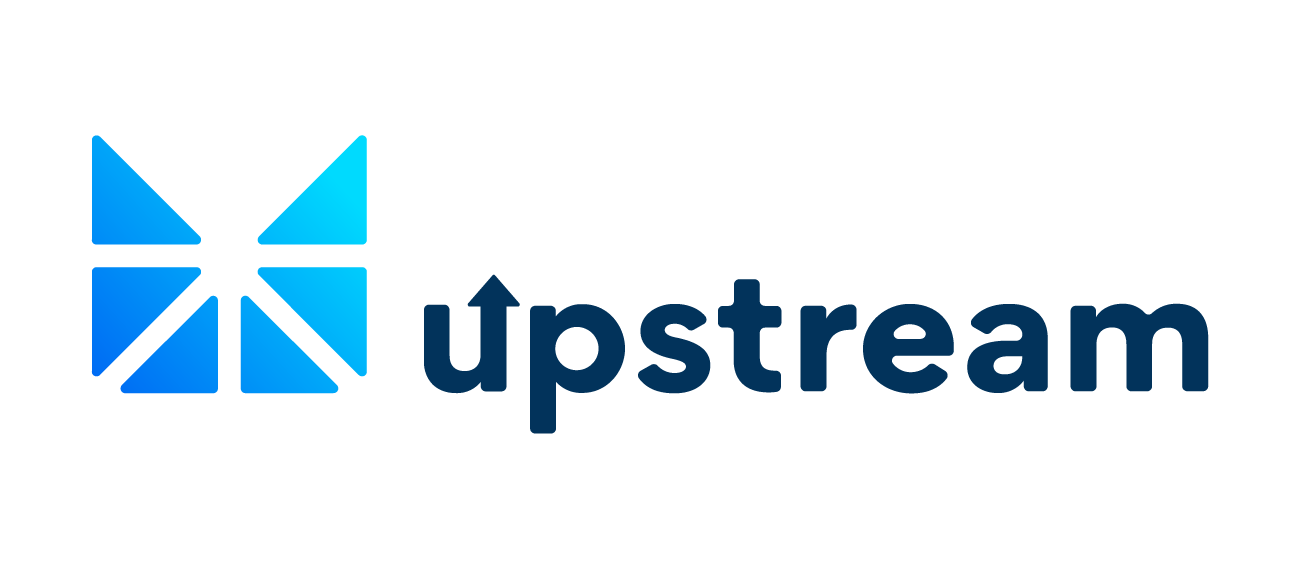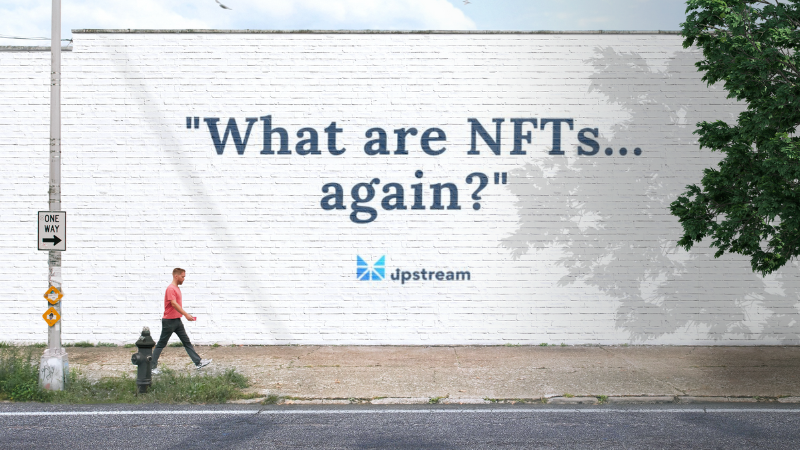Out with the old, in with the new wave of utility-focused, community-driven NFTs

By Anastasia Samaras
In the early days of non-fungible tokens (NFTs), the spotlight was on high-priced, speculative digital artwork. The market ballooned to $2.6B¹ and NFTs were being paraded around the internet by proud owners. Still, the majority of people were left out because they couldn’t afford to participate or couldn’t understand how to.
With that and the latest volatility in the crypto markets, the idea of NFTs as high-stakes investment opportunities lost considerable steam. The value of the tech behind NFTs, however, was not lost.
The use of NFTs as proof of ownership to decorate online identities and strengthen communities has since reached major brands across sports, music, and entertainment; many of which are working with Upstream to tap into the unique use cases blockchain technology can power.
We anticipate that the next stage of NFTs will put a strong emphasis on community building, accessibility, and fan engagement. We also anticipate that this new stage of NFTs will bring in an entirely new wave of fans who are not yet familiar with NFTs, Web3, and how exactly it will benefit them.
Here’s a brief overview for those fans:
First, what are NFTs again?
NFTs “or non-fungible tokens” represent ownership of a particular digital or physical item. This ownership is recorded on a blockchain that can’t be altered, meaning you’ll always have verifiable proof of this ownership.
NFTs have a similar idea to a paper certificate stating, for example, that an antique you purchased is authentic or that an artwork is an original, not a replica. On a blockchain, this instead is a digital record of authentication and ownership that’s immutable and transparent.
NFTs are now being used as authentication for physical items, Web3 tickets, redeemable perks, and membership. Any media can be tied to an NFT which invites artists to release songs, films, videos, and audio NFTs as well.
Why are NFTs valuable?
With NFTs came the concept of digital ownership. Today, a person’s online presence has become intertwined with their real-world identity. NFTs offer a new way to decorate your online identity, access communities, and create authentic time-stamps for your experiences.
Think of “BeReal,” leading the charts for most app downloads in 2022. The app’s success showcases how eager users are to snapshot authentic, unfiltered moments and share them with the world.
Growing up, people hung up autographed posters in their rooms, wore concert tour t-shirts, and showed off well-preserved trading cards. Today, people utilize social media and other community-driven platforms to digitally display their interests, experiences, and collections. Their social media pages and online platform profiles are their ‘room walls.’
For creators, NFTs follow the wider trend of taking back control over their work. Creators maintain control over the “smart contract,” the digital agreement which enables creators to specify the terms of the deal, such as usage rights. To support creators directly and engage more closely, fans can purchase a song, video, or audio NFTs directly from an artist.
Who owns the rights to the media tied to the NFT?
Any digital file, including the artwork tied to an NFT, may be copied or screenshotted. However, NFTs are made to grant you proof of ownership, which cannot be replicated.
Similar to acquiring physical works of art, anyone can purchase a photocopy of the Mona Lisa, but that does not make you an original owner.
Usually, you don’t obtain the copyright to the media, but you might acquire unique benefits, for example with Redeemable NFTs you can unlock unique perks like a meet and greet, a front-of-the-line pass, etc.
What is Web3?
Web 3.0 is the next version of the internet characterized by decentralized applications, user-owned data, and highly personalized user experiences putting end users back in the driver’s seat.
With Web3, users are only identified by an anonymous blockchain wallet with the option to share more data.
Upstream, for example, is a Web3 wallet where you may securely purchase and store your digital collectibles, grow your portfolio of assets, and eventually display your collections in a metaverse.
NFTs offer a familiar link from the world of blockchain and Web 3.0 to Web 2.0. They work to bring the concept of digital ownership to the web and offer a new way for users to engage with art, experiences, and one another.
How to purchase NFTs on Upstream.

Fans interested in current and upcoming NFT opportunities can learn more at https://upstream.exchange/ or reach the team at hello@upstream.exchange.
Sources
About Upstream
Upstream, a MERJ Exchange Market, is a fully regulated global stock exchange for digital securities. Powered by Horizon’s proprietary matching engine technology, the exchange enables investors to trade shares in IPOs, NFTs, U.S., and international dual-listed equities, and celebrity ventures directly from the app https://upstream.exchange/. Interested issuers can reach the team at hello@upstream.exchange.
About Horizon
Horizon is a fintech company that builds and powers global securities exchanges with an integrated suite of software for compliant issuance, management, and secondary trading of securities. Their in-house solutions combine Wall Street and Silicon Valley to power the next generation of securities offerings and trading in the U.S. and globally. Learn more at https://www.horizonfintex.com/.
Disclaimers
*NFTs received have no economic value, royalties, equity ownership, or dividends. NFTs are for utility, collection, and display only.
*U.S. investors are not permitted to trade in upstream listed securities. U.S. and Canadian citizens will only be able to trade in a security they currently own that has listed on upstream for liquidation only.
*Funding using bank payments. For bank payments, complete KYC and initiate a wire or transfer from your bank or financial institution using the details provided via email after your KYC is approved. If you haven’t already completed KYC identity verification or didn’t select ‘Bank’ as the ‘Deposit From’ option when you completed the KYC identity verification process initially, please go through KYC again selecting this payment method. Complete the KYC identify verification process by tapping Me>KYC
Upstream is a MERJ Exchange market. MERJ Exchange is a licensed Securities Exchange, an affiliate of the World Federation of Exchanges, and a full member of ANNA. MERJ supports global issuers of traditional and digital securities through the entire asset life cycle from issuance to trading, clearing, settlement, and registry. It operates a fair and transparent marketplace in line with international best practices and principles of operations of financial markets. Upstream does not endorse or recommend any public or private securities bought or sold on its app. Upstream does not offer investment advice or recommendations of any kind. All brokerage services offered by Upstream are intended for self-directed clients who make their own investment decisions without aid or assistance from Upstream. All customers are subject to the rules and regulations of their jurisdiction. By accessing the site or app, you agreed to be bound by its terms of use and privacy policy. Company and security listings on Upstream are only suitable for investors who are familiar with and willing to accept the high risk associated with speculative investments, often in early and development stage companies. There can be no assurance the valuation of any particular company’s securities is accurate or in agreement with the market or industry comparative valuations. Investors must be able to afford market volatility and afford the loss of their investment. Companies listed on Upstream are subject to significant ongoing corporate obligations including, but not limited to disclosure, filings, and notification requirements, as well as compliance with applicable quantitative and qualitative listing standards.

